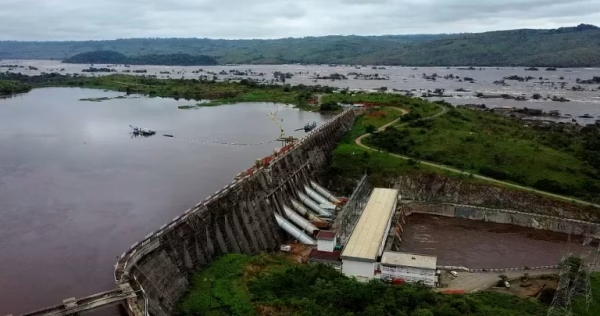The construction of the world’s largest hydropower station, the Grand Inga dam, is finally moving forward. Marred in years of delays, the project has faced numerous setbacks but now shows hopes of advancements. The project’s delivery was accelerated after officials convened in Zimbabwe on July 3. Once completed, the dam is expected to be the largest power station in the world.
The South African Development Community (SADC), which is the main overseer of the project has noted its positivity. SADC ministers are expected to present progress updates on the Grand Inga and Congo River Water Transfer initiatives at the next SADC Council of Ministers meeting in Madagascar. Through this, they may also be able to chart a way forward during the meeting, scheduled for August. The hydropower project, with a potential capacity of up to 70 gigawatts, is designed as the centerpiece of Africa’s Mission 300 initiative. The aim of the project is to connect 300 million Africans to clean energy by 2030.
Also read:
All to Know About the World’s Largest Hydropower Dam in DR Congo: The Grand Inga Dam
Project Factsheet
Location: Inga Falls on the Congo River, Democratic Republic of Congo (DRC), approximately 150 km upstream from the Atlantic Ocean.
Total potential capacity: Over 42,000 MW (some sources state up to 70 GW), which would be more than double the capacity of China’s Three Gorges Dam
Phases:
- Inga 1 & Inga 2: Existing dams, commissioned in 1972 and 1982 respectively, currently undergoing rehabilitation.
- Inga 3: The first and most critical phase of the Grand Inga project.
Proposed capacity: Originally 4,800 MW, later scaled up to 11,000 MW.
Estimated cost (Inga 3): Around US$13.9 billion (including transmission lines).
Power distribution (Inga 3):
- South Africa: 2,500 MW (initially 5,000 MW expressed interest)
- Nigeria: 3,000 MW (expressed interest)
- DRC Mining Companies: 1,300 MW
- DRC National Utility (SNEL) for Kinshasa and other cities: 1,000 MW
Estimated overall cost:
- Grand Inga Complex: Up to US$80 billion (including extensive transmission lines across Africa). Some estimates go up to US$100 billion.
The Significance of the Grand Inga Dam as the World’s Largest Power Project
Many may tend to underestimate the significance of the Grand Inga dam as the world’s largest hydropower project. With a potential capacity of up to 70 gigawatts, the dam could change the trajectory of electricity generation in Africa. The average household in the U.S. uses just under 11,000 kilowatt-hours a year. This means that if Grand Inga reaches its projected scale, it could generate enough electricity to power nearly half of all homes in the U.S. However, the dam’s generation would be used solely for homes in Africa. The dam in the Democratic Republic of Congo (DRC) would be a series of seven hydroelectric power stations at Inga Falls in the Congo River. However, the projected $80 billion cost of completing the Grand Inga plan remains a huge barrier for the DRC.

One of the reasons is because it is one of the world’s poorest countries. South Africa, Nigeria, Guinea and Angola have expressed formal interest in purchasing power from Grand Inga, tying the project to transnational energy security. Bob Mabiala, head of the ADPI-DRC, told the World Bank on June 3: “The electricity generation potential at the Inga site is one of the largest in the world. The development of Inga 3’s hydropower will be transformative for DRC. He also noted that it will increase access to clean, renewable, and affordable energy for Congolese households and industries. Through this, he noted that it will serve as a motor for inclusive growth and jobs.”
Also read:

